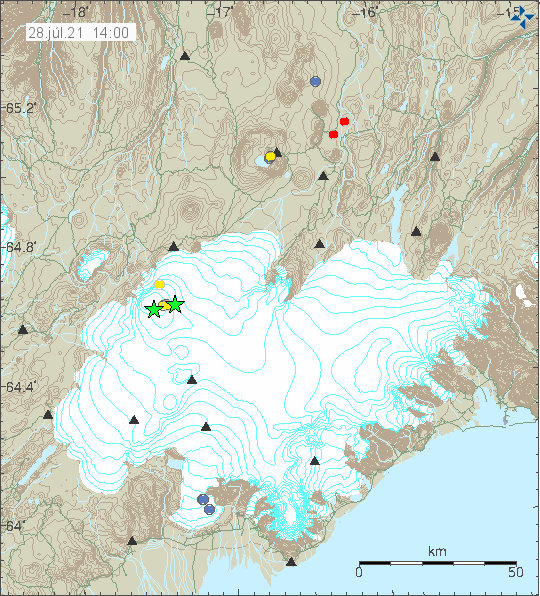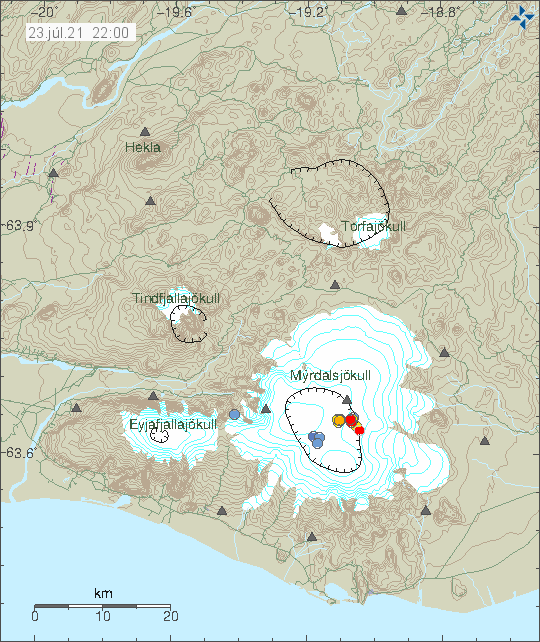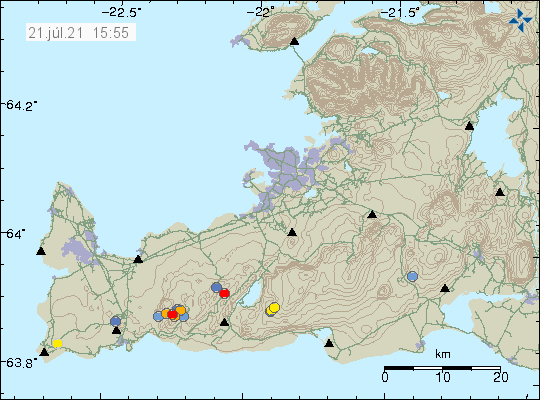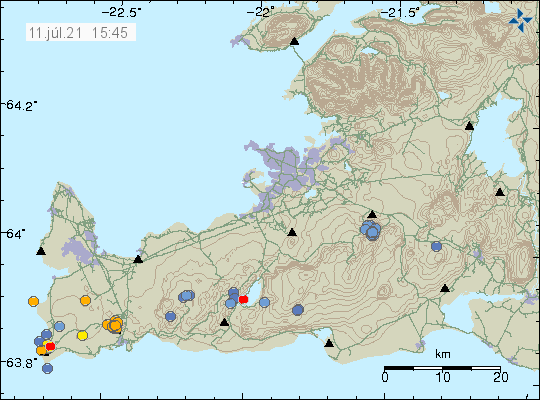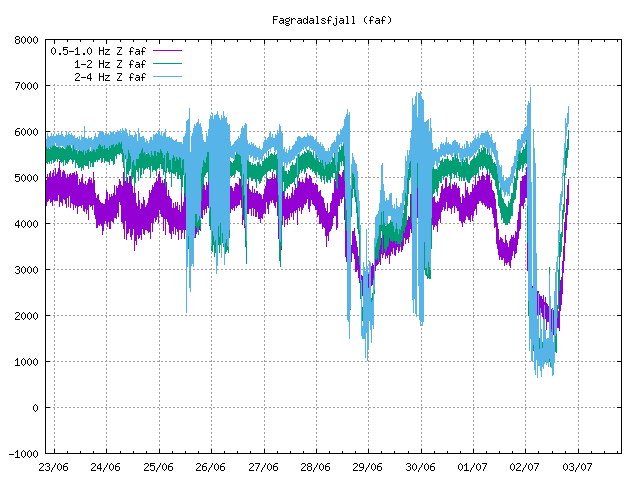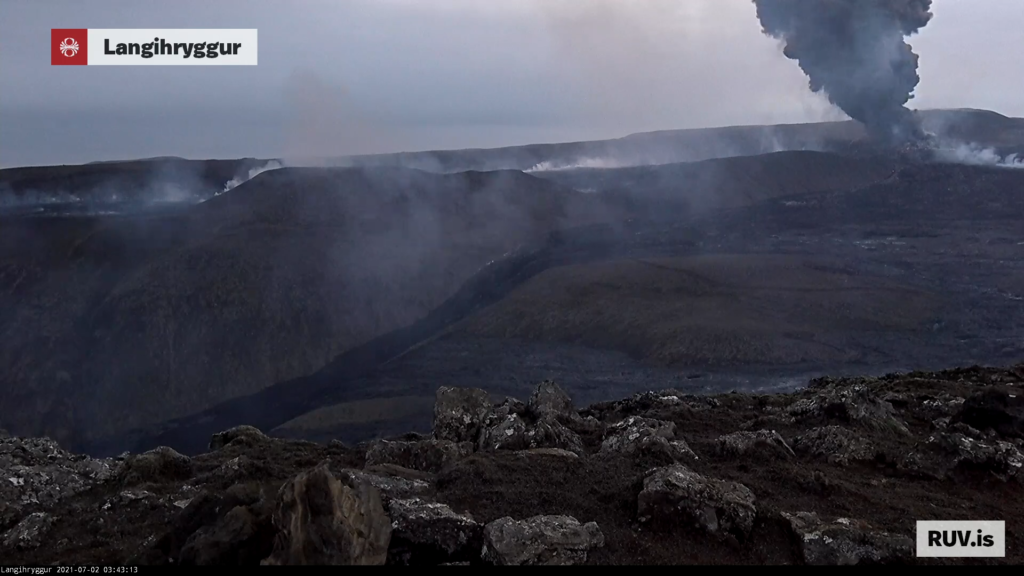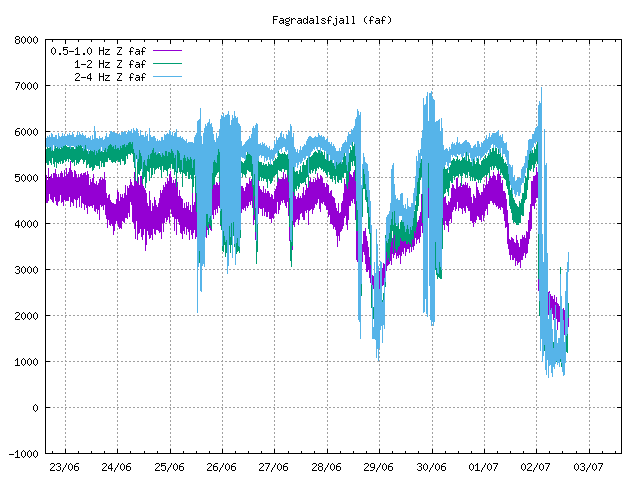This is a short update on the eruption in Fagradalsfjall mountain that is part of Krýsuvík-Trölladyngja volcano system (currently, this might change in the future).
- Since 23:00 UTC on 5-July-2021 the eruption has been on the low side and no lava has been seen leaving the crater when the fog is less dense in the eruption area. This is the longest break in the eruption activity since it started in 19-March-2021.
- Small amounts of lava has been seen in the crater and it is speculated that it might be flowing from the crater in tubes in the lava field. This remains unconfirmed at the writing of this article.
- Currently the eruption is not over. It is ongoing as is.
The following is a speculation on my part.
This lack of activity and amount of lava in the crater suggests that the deep system that has been feeding the eruption is for now close to being empty or is completely empty. That system of magma chambers needs time to fill up. This lack of activity is also common for this type of volcano and magma system. Since eruptions go trough a cycles of high and low activity. This might result in the eruption starting in a new fissure in next few weeks to months along with continuing in the current crater. There is also a equal chance of the eruption just continuing in the current crater once the eruption starts at full energy again. But that might be weeks until that happens.
End of speculations
Summer is fog season in Iceland when there is no strong wind and this has been a problem for monitoring the eruption on Reykjanes peninsula in recent days. This is going to continue until September or October depending on the weather pattern.
Donations
Please remember to support my work with donations. It helps me to keep my self running and to do normal day to day stuff with minor income from this work here. Thanks for the support. 🙂
